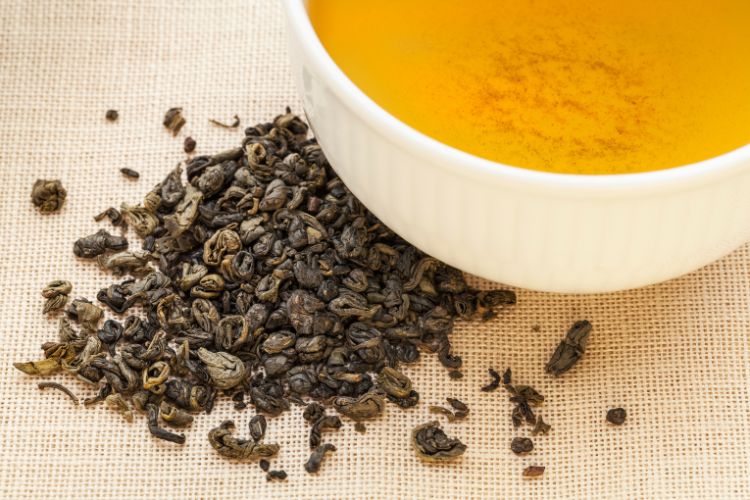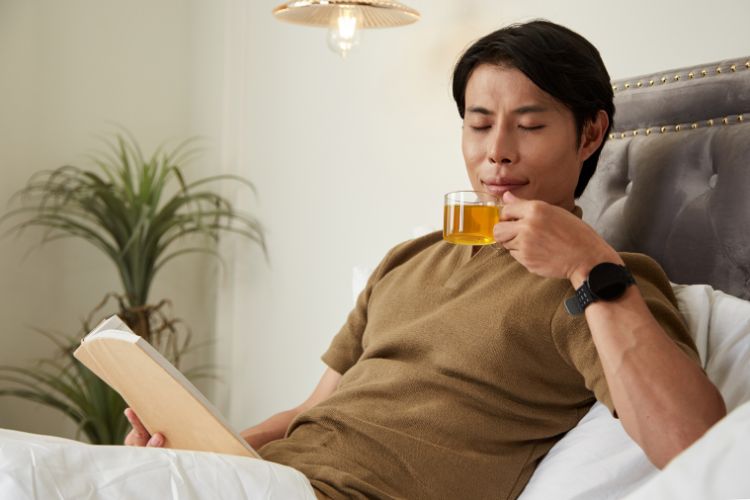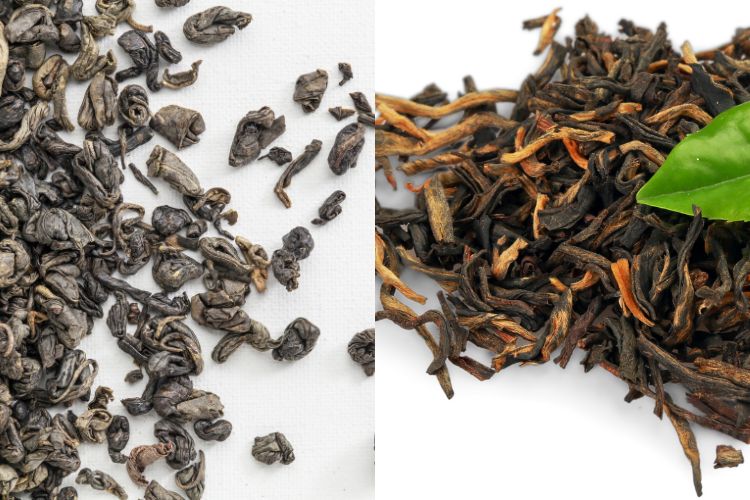Gunpowder Green Tea vs Green Tea: Which One is Best for You?
So, you brew a cup of green tea and enjoy something calm, smooth, maybe grassy. But then you try gunpowder green tea—and it hits different. Dense. Smoky. Packed.
Both come from the same plant, yet their paths couldn’t be more distinct. From the tight balls of gunpowder pellets to the flat leaves of sencha, everything from flavor to caffeine content shifts.
This isn’t just about style. It’s about what works for your taste, your routine, and your cup. So if you’re sizing up gunpowder green tea vs green tea, here’s what matters—leaf to cup.
A Quick Look at the Tea Families
Walk through any shelf of loose-leaf teas and you’ll find plenty under the green tea label—some bright and grassy, others shaded and rich.
Sencha, with its fresh snap. Gyokuro, steamed and slow-grown. Genmaicha, toasty from puffed rice. Most of these come from Japan or China, and their shapes stay fairly soft or flat.
Then there’s gunpowder tea. Rolled into tight balls, it looks almost metallic. These dense gunpowder pellets come from China, where the green tea leaves are withered, steamed, and curled until they resemble tiny stones.
This shape isn’t just for show. It packs the leaf tightly, locking in a smoky flavor and giving the brew a fuller, stronger body—sometimes with a slight edge of powder on the tongue.
The character of gunpowder tea is bold, often more intense than its greener cousins. And that’s where the difference starts to matter—how you brew it, drink it, and feel it.
Main Differences Between Gunpowder Green Tea and Green Tea
Some differences between gunpowder green tea and green tea show up right away. Others take a few sips to notice.
What you see, how it brews, and the way it lands on your palate—each part tells you something about what’s in your cup.

Let’s start with the most obvious one: how the leaves look before they even hit the water.
1. Appearance and Leaf Shape
With gunpowder tea, the leaves are rolled into firm, round shapes that resemble small beads.
These gunpowder pellets are dense, can be glossy, and compact—an old method designed to preserve freshness during long journeys across China.
Standard green tea doesn’t take this form. Most leaves are left flat, twisted, or slightly curled. They feel lighter, more delicate.
2. Flavor and Body
Gunpowder tea leans bold. Its smoky flavor comes from the way the leaves are rolled and dried—locked in tight, releasing slowly in the cup.
What you get is a deeper, sometimes heavier taste with a more full-bodied feel, especially if you brew it strong. Some sips may carry a slight bitter character, but in the right ratio, that edge adds structure.
Most regular green teas are lighter. Think grassy, clean, and sometimes soft with sweet undertones or a faint chestnut flavor—especially in Chinese green teas.
Others, like Sencha, lean sharper and more vegetal. These differences aren’t subtle if you pay attention.
3. Caffeine Content and Energy Effect
If you’ve ever swapped your energy drink for an afternoon tea and felt slightly underwhelmed, you probably had a mild green tea.
Most offer a subtle caffeine lift—enough for mental clarity, not enough for a sprint. The caffeine content varies, of course, but traditional types like Genmaicha or Sencha usually fall on the lighter side.
The result is a slow, sustained energy curve that feels calm, not buzzy. Gunpowder tea plays it differently.
Thanks to the density of its pellets, it often delivers a stronger caffeine kick per spoonful, especially if you brew it longer or use more leaves.
4. Preparation and Steeping
Gunpowder tea needs a bit more preparation time. Those tight pellets take longer to open up during the first steepings, so a few extra minutes go a long way.
Use hot water, not boiling—about 75 to 80°C is safe for both types. With other green teas, you’ll find everything from ceremonial preparation styles to quick, straightforward methods.
Either way, how you brew shapes what ends up in your cup. And with green teas, small changes matter.
5. Health and Nutritional Profile
Both options bring in powerful antioxidants, making them a smart, healthy choice for daily sipping. Where they differ is in amino acid content.
Japanese teas like Gyokuro are often shaded before harvest, which boosts amino acid levels and softens the flavor.
Green teas in general support heart health promotion, steady metabolism, and balanced nutrition. Whether you lean grassy or smoky, these are teas with core health benefits that hold up beyond taste.
6. Price and Quality Factors
When it comes to price, gunpowder tea usually falls on the more affordable side. It’s widely available, stores well, and gives you a strong brew without needing much leaf.
High-end green teas—especially from Japan—tend to climb in price. Teas like Gyokuro or shaded Sencha reflect a higher level of care, which shows in both quality and taste.
You’ll find a broad selection at wellness stores, but for rarer types or better grades, look to specialty tea shops. Many offer curated teas at specialty tea counters, where you can smell the leaves and ask questions before buying.
7. Flavor Preference
If you like bold brews with a smoky twist, gunpowder tea delivers a robust experience that holds up well on its own or with a sprig of mint.
It’s also the base for Moroccan mint tea, where the strength of the leaf balances the sweetness.

For those new to green teas, starting with something like Sencha or Genmaicha is often easier.
They offer a refreshing body, lighter texture, and less bitterness. These options suit a wider range of personal preferences, especially if you’re still figuring out your place in the routine.
If you’re trying gunpowder for the first time, add a dash of mint and go easy on steep time and temperature. Keep the water warm—not boiling—and taste early.
The Final Scoop
Gunpowder green tea vs green tea isn’t just a matter of strength or shape. It comes down to what you enjoy drinking and when.
One brings a smoky flavor with a dense brew, the other leans light, grassy, or even sweet, depending on the type.
Think about flavor, caffeine content, preparation time, and where each fits in your day. Some teas work best in the morning, others late afternoon!
Whichever you reach for, both deserve space in your daily routine—especially if you like variety without switching to something entirely new.


